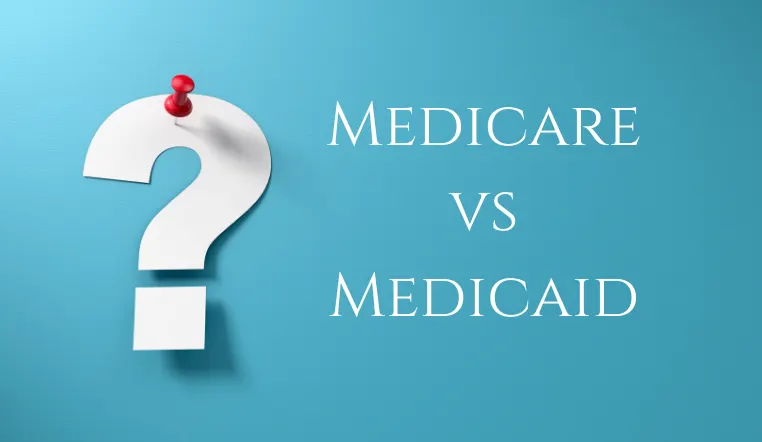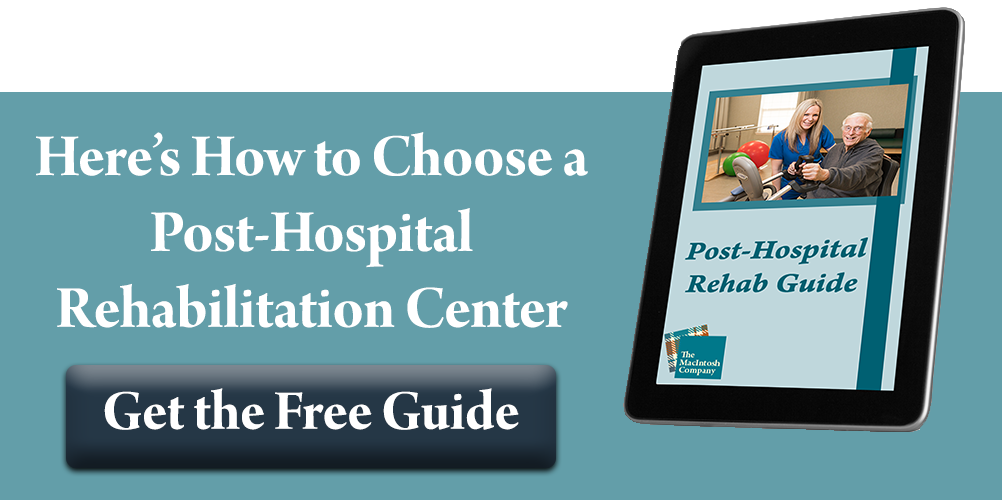We hear it a lot—“what’s the difference between Medicare and Medicaid?”
The confusion is natural. If you don’t have any experience with either program, it’s easy to get the two mixed up.
To help clear things up, let’s go over the basics of Medicare and Medicaid, who’s eligible for each program, examples of what each covers and how the two can work together for Ohio seniors.
What Is Medicare?
Medicare is a federal health insurance program that’s generally for people 65 years old and up (there are some exceptions). Although it is a federal program, you can also receive Medicare services through private insurance companies that contract with Medicare (this is what’s known as Medicare Part C—more on that below).
Who Is Eligible for Medicare?
As mentioned above, anyone over 65 is eligible for Medicare. However, there are certain conditions that would make someone eligible for Medicare before turning 65, such as amyotrophic lateral sclerosis (ALS) or End-Stage Renal Disease (ESRD or kidney failure).
If you receive Social Security Disability Insurance (SSDI) for more than 24 months, you’ll likely also qualify for Medicare even if you aren’t 65.
What Does Medicare Cover?
Original Medicare covers things such as visits to a doctor, health care provider, or specialist that accepts Medicare patients. You can expect to have a deductible you’ll need to meet before Medicare pays for covered services and supplies.
There are different types of Medicare coverage (called “parts”) that eligible people can use to cover specific services. Those are:
- Medicare Part A (Hospital Insurance). This would apply to things such as inpatient hospital stays and skilled nursing facilities.
- Medicare Part B (Medical Insurance). This would apply to things such as certain doctors’ visits, outpatient care, medical supplies and preventative services.
- Medicare Part C (Medicare Advantage Plans). This is a type of Medicare that’s offered by private companies. For the most part, these plans include all Part A and Part B benefits—think of them as a combination of the two (although coverage will depend on the plan). Additionally, most offer prescription drug coverage.
- Medicare Part D (prescription drug coverage). Most prescriptions aren’t covered with Original Medicare, which is why some people choose a Part D plan.
____________________________________________________________
Related: Helping a Central Ohio Senior with Medicare Open Enrollment
____________________________________________________________
What Is Medicaid?
Like Medicare, Medicaid provides health coverage for Americans. It covers different groups of people, including low-income adults, elderly adults and people with disabilities.
For seniors, the most relevant difference between what Medicaid covers and Medicare covers is that Medicaid covers long-term care costs like skilled nursing facilities.
But wait. We said above that Medicare covers skilled nursing. How is that different from Medicaid?
Well, the difference is this: Medicare does cover some skilled nursing care, but only for a limited time. While Medicaid covers long-term skilled nursing, Medicare will require you to copay after 20 days and to pay all costs privately after 100 days.
To give you an idea of what each might be used for, if someone is hospitalized and needs skilled nursing care for a short time following their stay, Medicare would help cover the costs. By contrast, Medicaid would be for a long-term stay in a skilled nursing facility. You could use Medicare for a long-term stay, but like we mentioned above, you would have to cover costs privately after 100 days.
Who Is Eligible for Medicaid?
There is an extensive list of who is eligible for Medicaid. Here are some examples of people who could qualify for Medicaid:
- Low-income adults
- Children
- Pregnant women
- Individuals with disabilities
- Individuals 65 and older who meet income and asset limits set by their state
Learn more about your state’s eligibility requirements here.
What Does Medicaid Cover?
As is the case with Medicare, there are lot of things Medicaid can cover. For both, though, it’s important to keep in mind that coverage is dependent on a range of different factors. For example, when it comes to what each state covers through Medicaid, there are both mandatory and optional benefits.
Here are some examples of mandatory Medicaid benefits:
- Inpatient hospital services
- Outpatient hospital services
- Nursing facility services
- Home health services
- Physician services
__________________________________________________________
Ask the Expert: Applying for Medicaid for a Central Ohio Senior
__________________________________________________________
How Medicaid and Medicare Work Together for Ohio Seniors
If you’re a senior living in the state of Ohio receiving healthcare through Medicaid and Medicare, there’s a resource to help you receive the services you need: MyCare Ohio.
MyCare Ohio is a program developed by the state in partnership with the federal government. It’s meant to help make care delivery easier for older adults who receive both Medicare and Medicaid.
Through MyCare Ohio, you’ll still receive all the benefits that you would through Medicare and Medicaid programs. What it offers is a single point of contact to talk about your benefits received through each program.
For seniors living in a skilled nursing facility while receiving both Medicare and Medicaid benefits, you can learn more about how MyCare Ohio works here.
How Medicaid and Medicare Work at MacIntosh Communities
The world of insurance, Medicare and Medicaid can be confusing to navigate. That’s why MacIntosh is here to help.
If you have any questions about how Medicaid or Medicare coverage would work at a MacIntosh Community, please contact us online or call us at (614) 345-9500 today. You’ll be able to speak with a director of admissions who can answer questions about your needs or those of your loved one.



